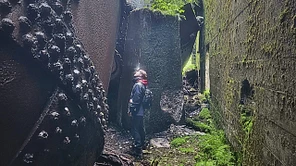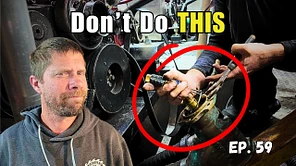If you own a boat, you’ve likely heard about zincs—but what exactly are they, and why are they so important? Zincs, also known as sacrificial anodes, play a crucial role in protecting your boat from corrosion. Without them, your boat’s metal components—such as the hull, propeller, and engine—could deteriorate rapidly due to electrolysis.
In this article, we’ll cover:
✅ What zincs are and how they work
✅ Why boats need zincs
✅ How to determine how many zincs your boat needs
✅ Installing zincs on an aluminum boat
✅ Why regular zinc checks are essential
What Are Zincs and How Do They Work?
Zincs are pieces of highly reactive metal (usually zinc, aluminum, or magnesium) that are attached to a boat’s metal parts to prevent corrosion. They work through a process called galvanic corrosion, where metals in water naturally break down over time due to electrical currents.
Because zinc is more electrically reactive than other metals on your boat, it will corrode first, sacrificing itself to protect more important components. That’s why they’re called sacrificial anodes.
Why Do Boats Need Zincs?
Without sacrificial anodes, critical boat parts such as:
- Propellers
- Shafts
- Rudders
- Hull plating (especially aluminum boats)
- Outboard and sterndrive engines
… would rapidly corrode, leading to expensive damage and potential safety risks. Saltwater environments accelerate this process, making zincs especially important for boats that operate in the ocean.
How Many Zincs Does Your Boat Need?
The number of zincs required depends on several factors:
1️⃣ Boat Size and Metal Exposure – Larger boats or boats with more exposed metal parts need more zincs.
2️⃣ Type of Water –
- Saltwater: Zinc anodes are most common.
- Brackish water: Aluminum anodes work best.
- Freshwater: Magnesium anodes are ideal.
3️⃣ Electrical Systems – Boats with multiple electrical systems or bonded metal parts require more anodes.
A good rule of thumb is to consult your boat manufacturer’s guidelines or a marine professional to determine the right amount and placement of zincs.
Installing Zincs on an Aluminum Boat
For aluminum boats, installing zincs is straightforward but crucial. Since aluminum is already a softer metal, you don’t want corrosion to start anywhere on the hull.
Important: Instead of bolting or screwing zincs onto the hull like on fiberglass or steel boats, zincs on an aluminum boat must be welded on. This ensures proper electrical conductivity and prevents detachment over time.
Checking and Replacing Zincs Regularly
Zincs are not a set-it-and-forget-it solution. They wear down over time and need regular inspections to ensure they’re still effective.
How often should you check your zincs?
- At least every couple of months if your boat is in saltwater.
- Every few months for boats in freshwater.
- During haul-outs and routine maintenance.
What happens if your zincs are completely gone?
Once a zinc anode is fully corroded, the water will start attacking other metals on your boat, leading to serious and expensive damage.
Final Thoughts: Protect Your Boat with Zincs
Sacrificial anodes are one of the most affordable and essential ways to protect your boat from corrosion. Ensuring you have the right number of zincs, installing them correctly (especially on aluminum boats), and checking them frequently will extend the life of your boat’s critical components.
If you’re unsure whether your zincs are still working, it’s always better to replace them sooner rather than later!











